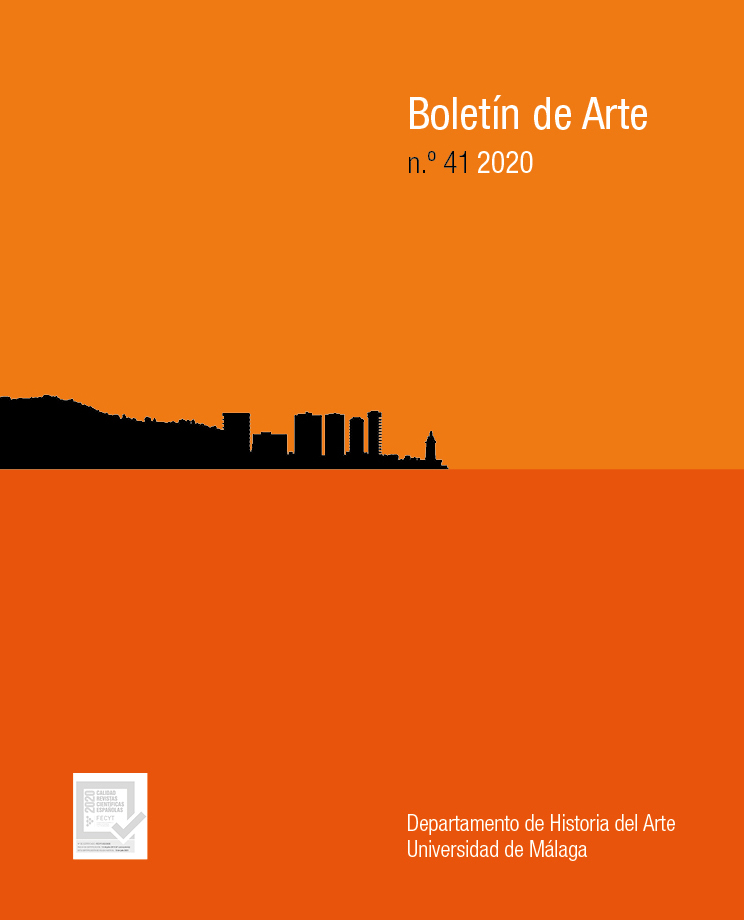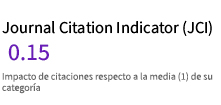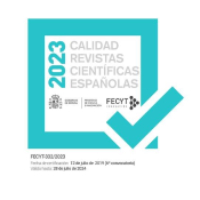Inji Efflatoun: White Light
DOI:
https://doi.org/10.24310/BoLArte.2020.v41i.10606Keywords:
Avant-garde, Egypt, Transnational feminism, Visuality, Inji Efflatoun, Global ModernismAbstract
The Egyptian artist Inji Efflatoun (1924-1989) is widely recognized as a major avant-garde figure in Egyptian modernist history as well as a feminist activist who petitioned for women’s suffrage, amendments to family law, and for worker’s rights. Perhaps most famously, she was among the first cohort of women to be arrested as a political prisoner; she served a four-year sentence under President Gamal Abdel Nasser for her work with the Egyptian Communist Party (1959-1963). Most scholarship on Efflatoun has followed the artist’s autobiographical narrative in treating the artist’s dual activities – political action and artistic practice – as essentially opposed. This essay proposes an adjustment to this frame, arguing instead for recognizing the artist’s theoretically-informed response to gendered somatophobia (fear of the body) as a central aspect of both commitments. The essay examines the darkness of Efflatoun’s early surrealist paintings as a pairing with the «white light» of her 1970s paintings, thereby revealing the artist’s ongoing inquiry into possibilities for kinship based on copresence rather than appearance.
Downloads
Metrics
References
Archival (materials consulted in the Bibliotheca Alexandrina ‘Memory of Modern Egypt’ repository)
ALI, Fatima (1977), «Fannana Tarsumu… al-Faragh», Akhir Sa‘a, 30 March.
ATTIYA, Naim (1977), «al-Hawa? wa-l-Nur fi Lawhat Inji Aflatun al-Jadida».
EFFLATOUN, Inji (1975), «La Femme Créatrice de Valeurs».
Handbill (1941), Second Exposition de l’Art Indépendant, Cairo, 10-25 March.
Books, Journals, Films
ATALLAH, Nadine (2019), «La participation de l’Égypte à la IIème Biennale de São Paulo (1953-1954): Une initiative individuelle, des enjeux nationaux», Manazir Journal, n.º 1, pp. 45-68. https://doi.org/10.36950/manazir.2019.1.1.4.
BARDAOUIL, Sam (2017). Surrealism in Egypt: Modernism and the Art and Liberty Group, I. B. Tauris, London.
DAVIS, Angela (1989). Women, Culture, & Politics, Random House, New York.
EFFLATOUN, Inji (1993), Mudhakkirat Inji Aflatun (Inji Efflatoun’s Memoirs), Sa?id Khayyal, Dar al-Su?ad al-Sabah, Kuwait.
GROSZ, Elizabeth (1994), Volatile Bodies: Toward a Corporeal Feminism, Indiana University Press, Bloomington.
KANE, Patrick (2012), The Politics of Art in Modern Egypt: Aesthetics, Ideology and Nation-Building, I.B. Tauris, London.
KOBER, Marc (2005), «Georges Henein, Reporter de l’Universel», Mélusine, n.º 25, pp.193-206.
LACOSS, Donald (2010), «Egyptian Surrealism and ‘Degenerate Art’ in 1939», Arab Studies Journal, vol. 18, n.º 1, Spring, pp. 78-117.
LADUKE, Betty (1989), «Egyptian Painter Inji Efflatoun: The Merging of Art, Feminism, and Politics», NWSA Journal, vol. 1, n.º 3, pp. 474-85.
LENSSEN, Anneka, ROGERS, Sarah and SHABOUT, Nada (eds.) (2018), Modern Art in the Arab World: Primary Documents, Museum of Modern Art, New York.
MONCIAUD, Didier (2015), «Les engagements d’Inji Aflatun dans l’Égypte des années quarante», Cahiers d’histoire: Revue d’histoire critique, n.º 126, pp. 73-95.
MULVEY, Laura (1975), «Visual Pleasure and Narrative Cinema», Screen, vol. 16, n.º 3, 1 October, pp. 6–18.
No Author (1985), «Inji Aflatun...», Adab wa Naqd, vol.18, December, pp. 93-122.
No Author (1966), «Bursars’ Exhibition», Arab Observer n.º 296, 21 February, pp. 27-34.
No author (1967), «Expositions: Inji Efflatoun», Jeune Afrique, 30 July, pp. 59-60.
No author (1967), «Inji Efflatoun: Variations on an Egyptian Theme», Egypt Travel Magazine, n.º 148, August, pp. 36-39.
POLLOCK, Griselda (1988), Vision and Difference: Femininity, Feminism and the Histories of Art, Routledge, London.
RADWAN, Nadia (2016), «Inji Efflatoun: Multiple Idioms of an Egyptian ‘New Woman’», in Focus, Works from the Mathaf Collection / Mother Tongue: Selected Works by Inji Efflatoun, ed. Leonore-Namkha Beschi, Mathaf-Arab Museum of Modern Art, Doha, consulted in typescript.
SALEM, Sara (2018), «On Transnational Feminist Solidarity: The Case of Angela Davis in Egypt», Signs: Journal of Women in Culture and Society, vol. 43, n.º 2, pp. 245-67.
SHA‘ABAN, Mohamed (1988), Inji. Cairo: al-Markaz li-l-Qawmi al-Sinima (National Cinema Center). Safarkhan Art Gallery Channel. En: https://www.youtube.com/watch?v=ulTAQaffIBU.
YUNAN, Ramsis (1969), Dirasat fi al-Fann, Dar al-Kitab al-Arabi, Cairo.
Downloads
Published
How to Cite
Issue
Section
License
Todos los contenidos publicados en la revista Boletín de Arte están sujetos a la licencia Creative Commons Reconocimento-NoComercia-Compartirigual 4.0 cuyo texto completo puede consultar en <http://creativecommons.org/licenses/by-nc-sa/4.0>

Los/as autores/as cuyas contribuciones sean aceptadas para su publicación en esta revista conservarán el derecho no exclusivo de utilizar sus contribuciones con fines académicos, de investigación y educativos, incluyendo el auto-archivo o depósito en repositorios de acceso abierto de cualquier tipo.
La edición electrónica de esta revista esta editada por la Editorial de la Universidad de Málaga (UmaEditorial), siendo necesario citar la procedencia en cualquier reproducción parcial o total.











4.png)
